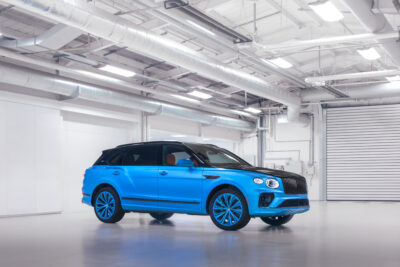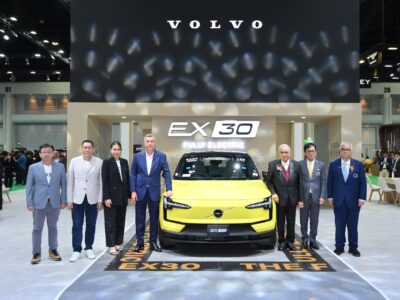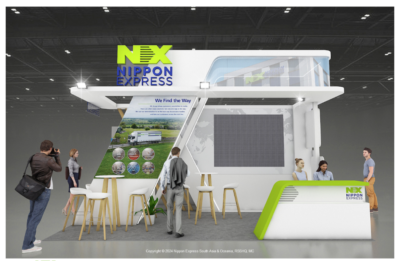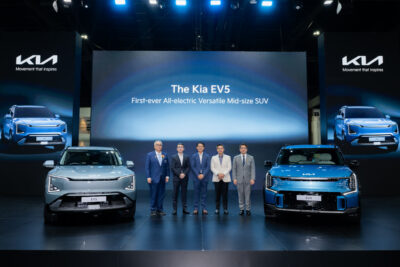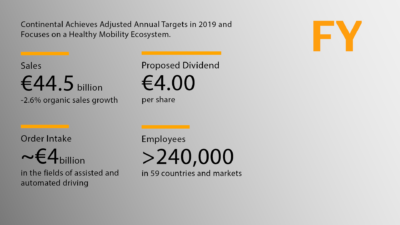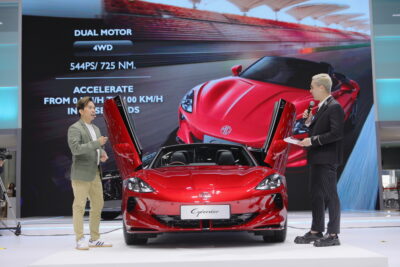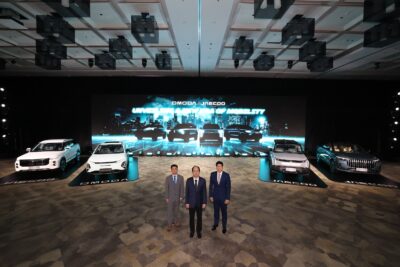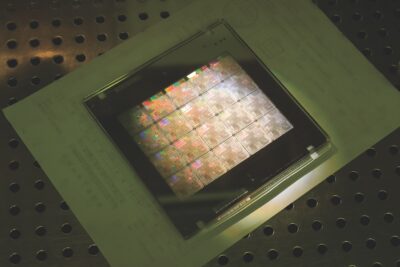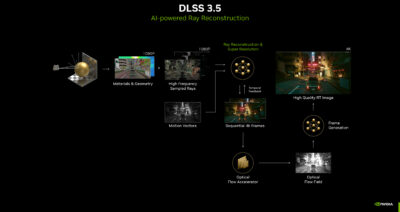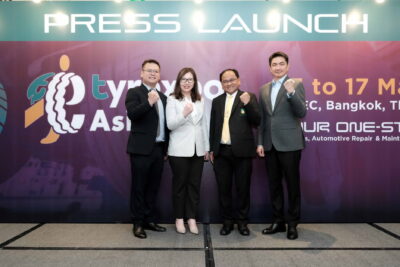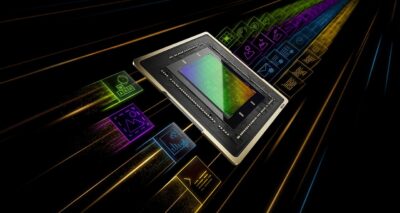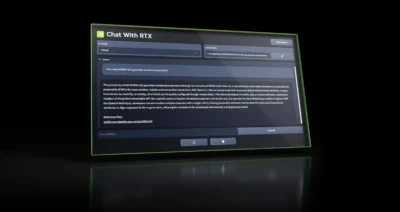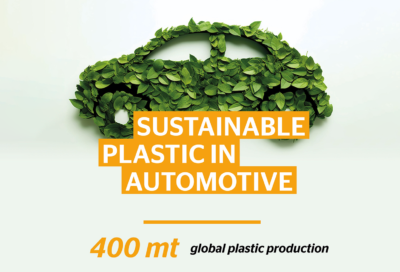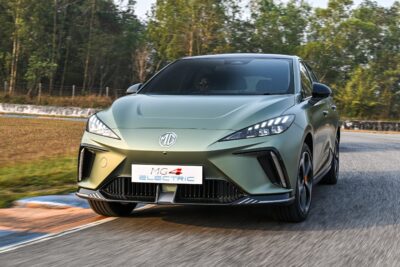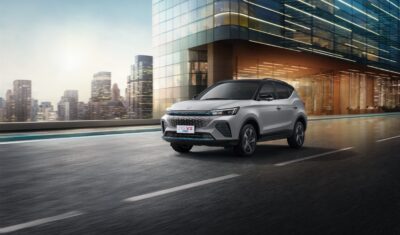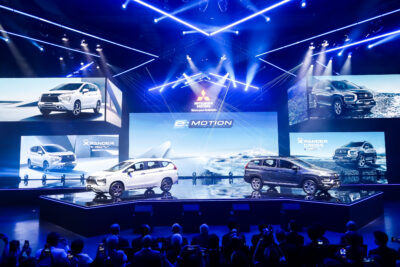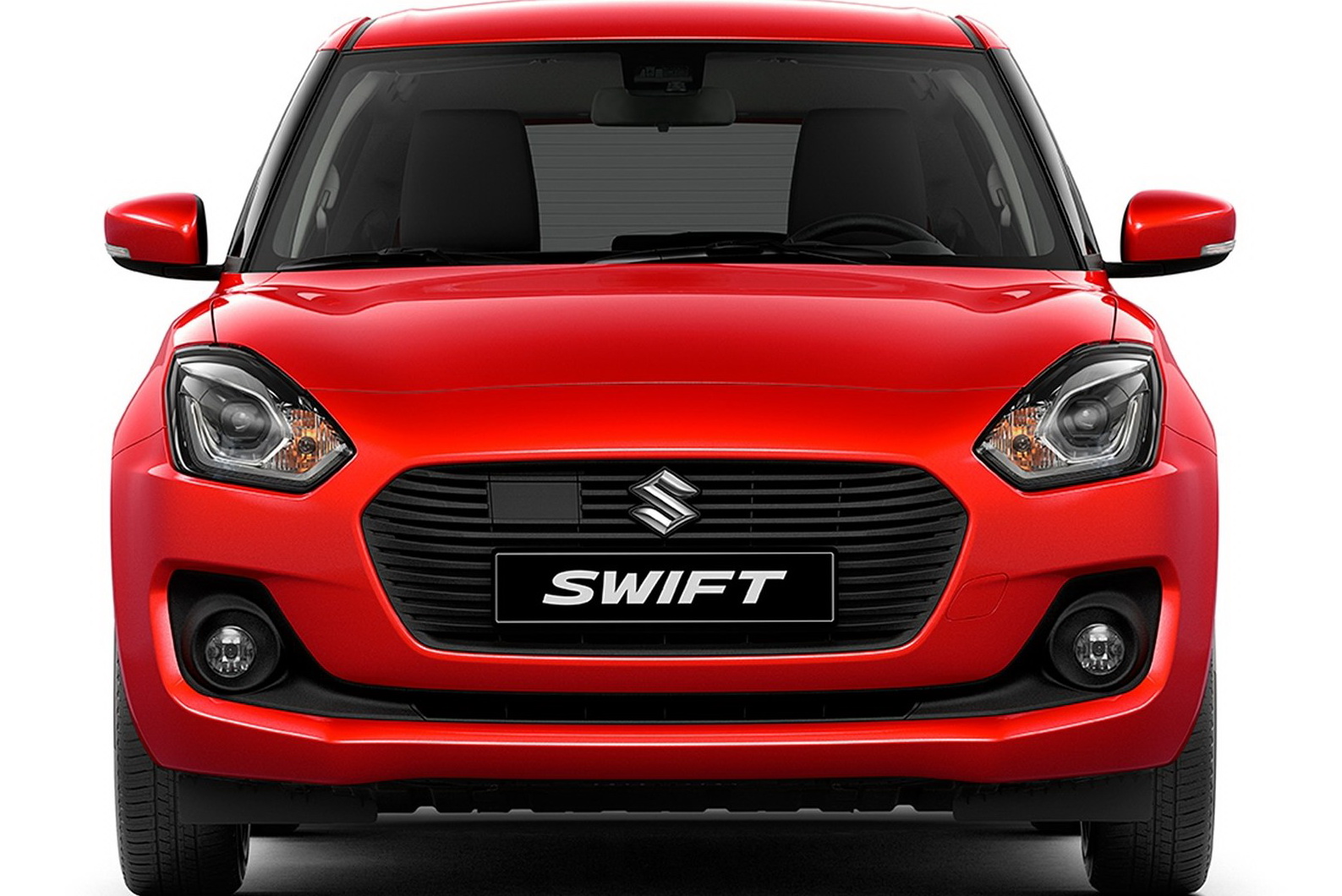
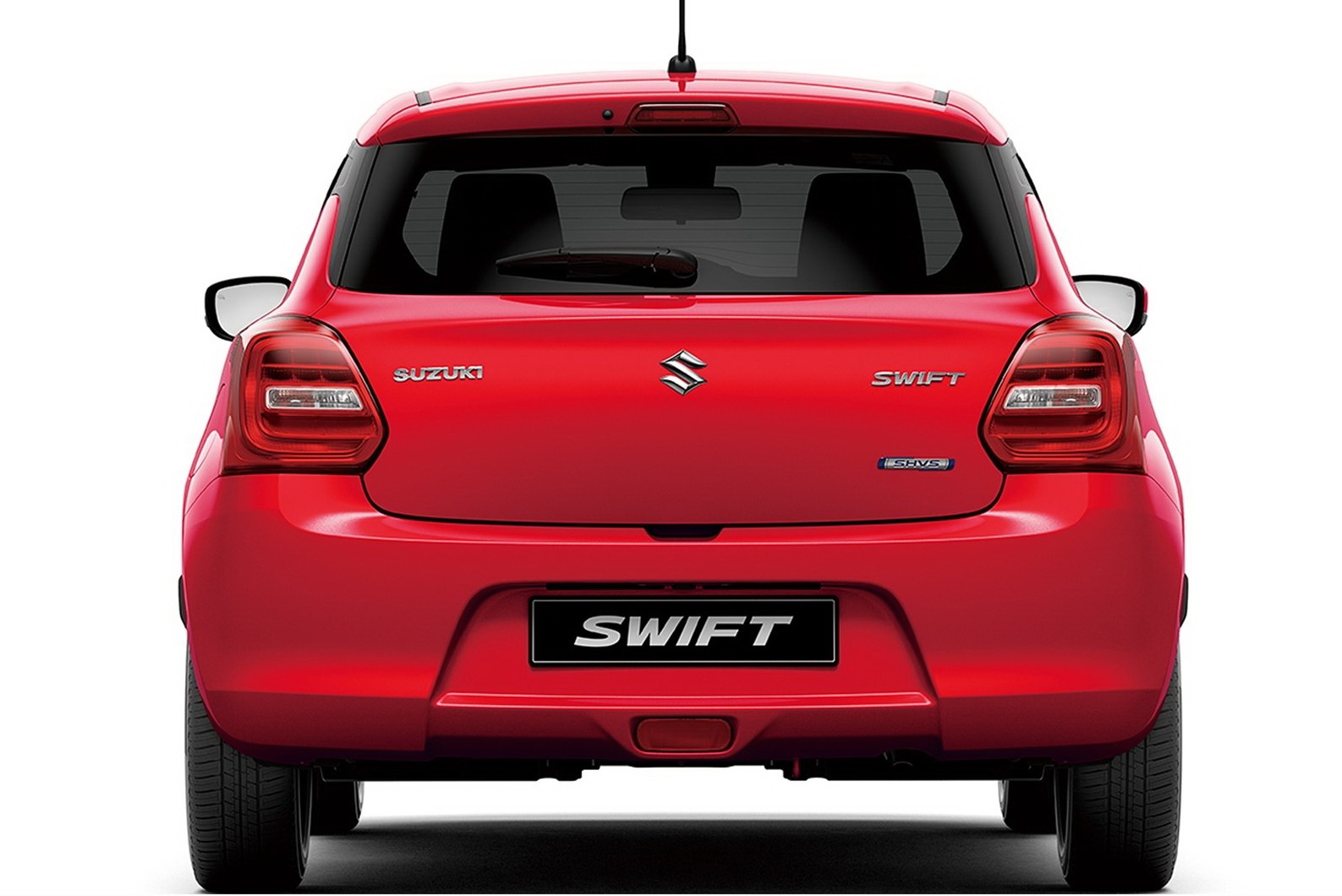
This new platform or underbody of new Swift is now 30kg lighter than before which has contributed to the car registering a kerb weight of just 890kg (SZ3 model) – 120kg lighter overall for the whole car.
The new Swift is 10mm shorter than the outgoing model, while its wheelbase is 20mm longer, creating more interior room including 25 per cent more luggage capacity at 254L, or 54 litres more than the outgoing model. It is also 15mm lower and 40mm wider, further accentuating its low and wide stance. Additionally, the European Swift has a wider front and rear track than the Japanese Domestic model.
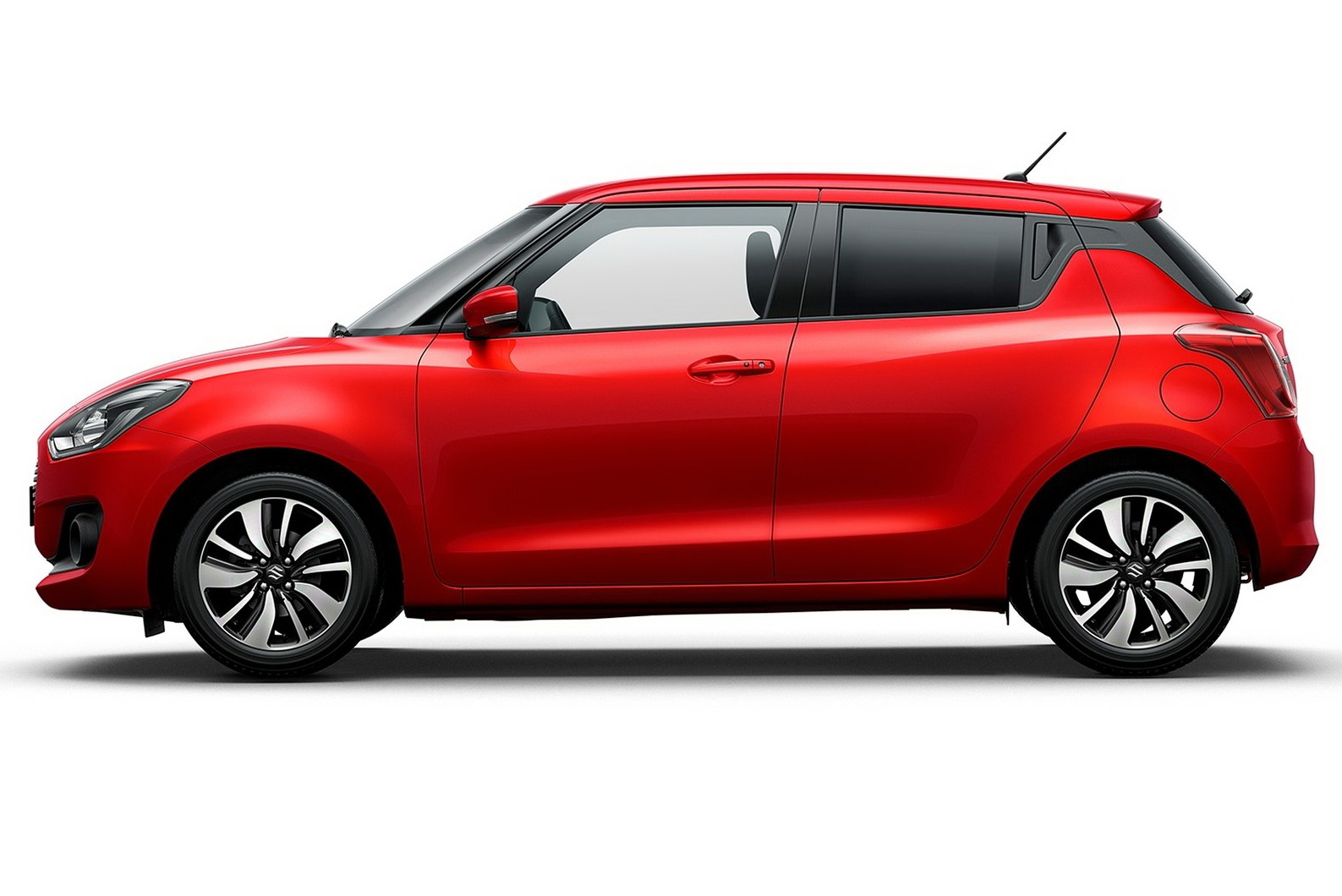
Development of New Swift – Put Through Its Paces in Europe
In order to suit the needs of European customers, Suzuki knew that simply designing and developing the new Swift in Japan would not be sufficient. So it turned to the roads of Europe, where teams of local evaluation drivers helped to hone the new car.
Testing of the chassis, which is the centrepiece of the new Swift’s evolution, commenced in January 2016 in the United Kingdom and Germany. Covering a total of more than 6,000 miles, the teams tested as many as 90 different suspension prototypes in an effort to meet the need for optimum steering feel together with providing supple and agile suspension for British roads.
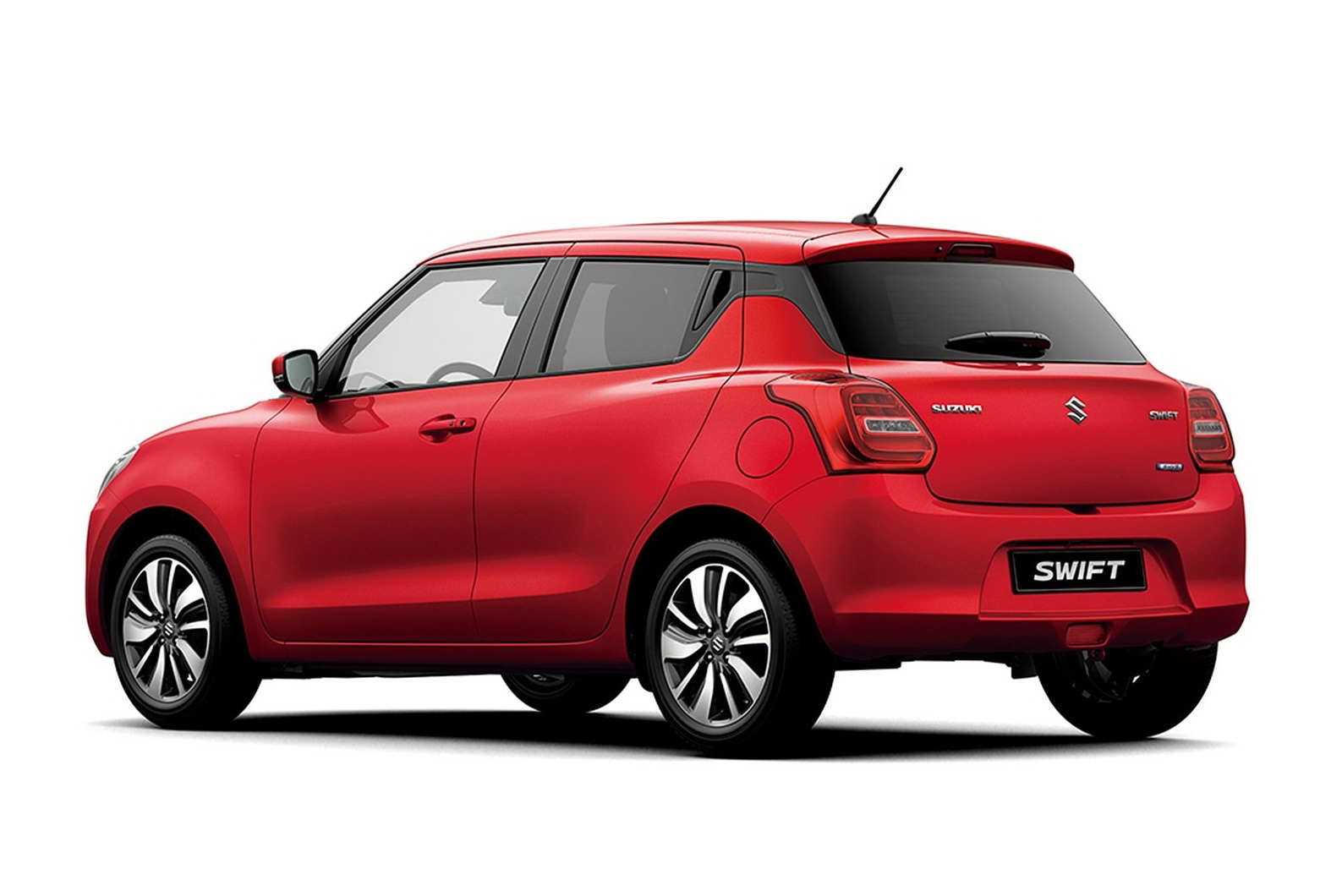
Boosterjet technology
After the debut of the 1.0-litre three cylinder Boosterjet in Baleno in June 2016 and S-Cross in October 2016, this engine technology is now extended to the new Swift. Offering the same level of power and torque of a much larger capacity normally aspirated engine (1.7-1.8-litre), it delivers an effortless drive and genuine driving pleasure. This unit has an output of 111PS and is Direct Injection turbocharged (DITC). It is a very compact engine and offers 170Nm of torque available from 2,000rpm through to 3,500rpm for manual transmission.
1.2-litre Dualjet
Suzuki first introduced its 1.2-litre (K12C) Dualjet technlogy in 2014, initially in the Swift and then in Baleno in June 2016. In summary, Dualjet incorporates Suzuki’s renowned engine technology and uses twin fuel injectors for improved fuel economy. Utilising Dualjet design that positions the fuel injectors very close to the engine inlet valves allows for a finer fuel atomisation. The maximum power output is 90PS with a torque figure of 120Nm at 4,400rpm. Acceleration time to 62mph is 11.9 seconds for the SZ3 2WD and 12.6 seconds for the SHVS ALLGRIP equipped model.
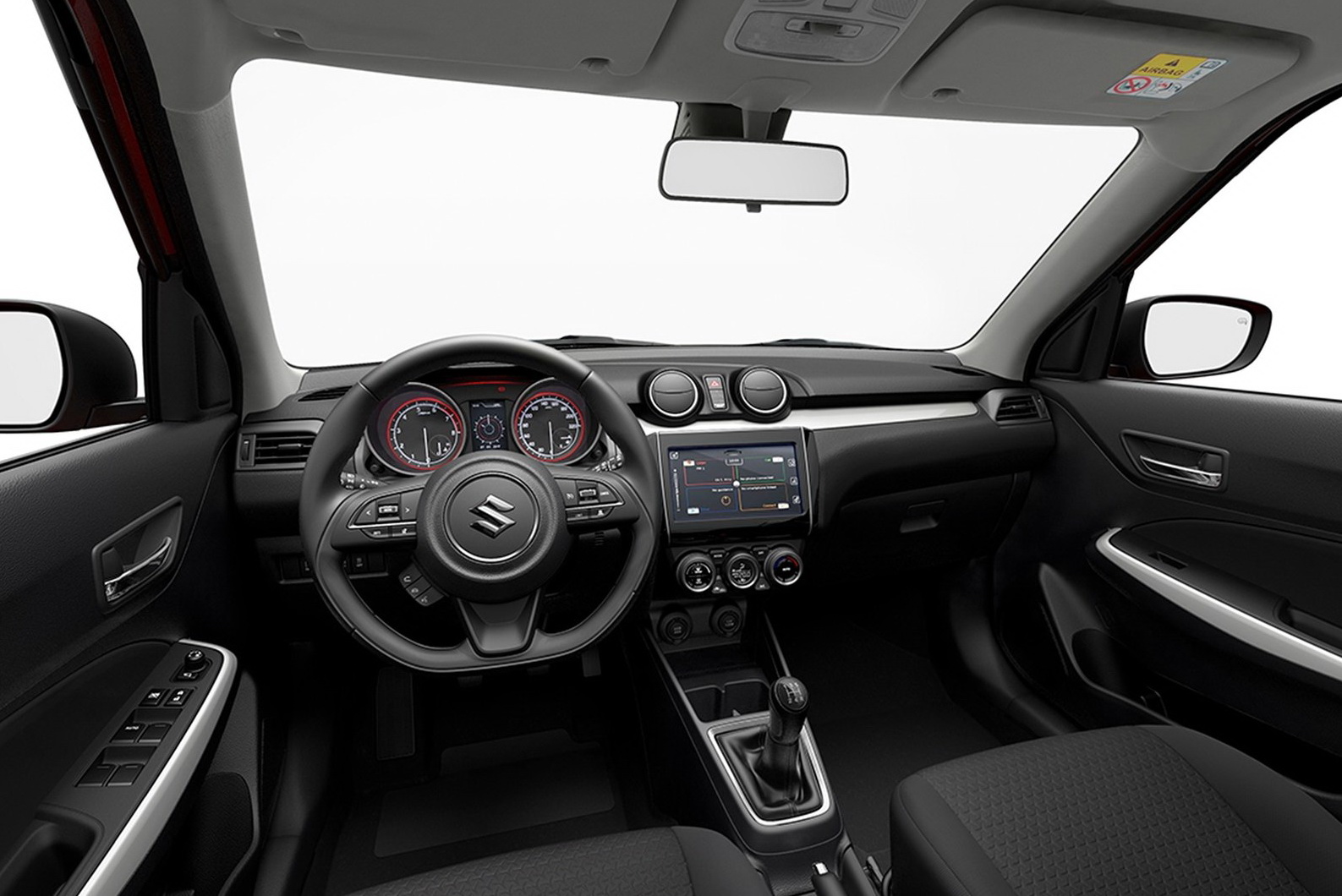
The SHVS mild hybrid system is a compact and lightweight system that incorporates an Integrated Starter Generator (known as ISG) which acts as both a generator and starter motor, the ISG is belt driven and assists the engine during vehicle take off and acceleration and also generates electricity through regenerative braking. In new Swift, SHVS is available together with Boosterjet for the first time and results in CO2 emissions as low as 97gkm.
The energy assistance provided during acceleration enables the SHVS to be known as a mild hybrid system which is ideally suited to a compact car and adds just 6.2 kg to the overall weight.
4WD (ALLGRIP AUTO)
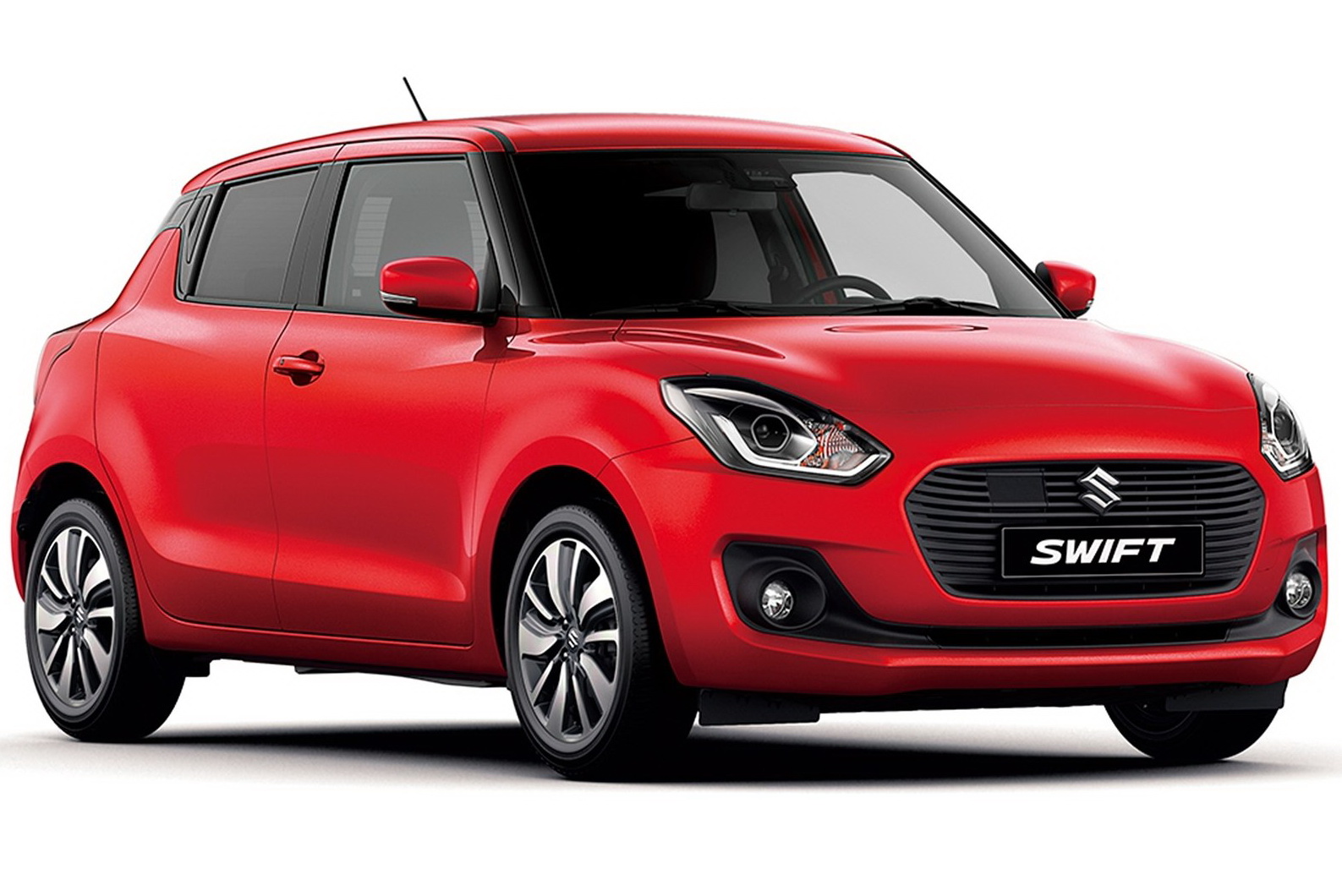
The new Suzuki Swift adopts Suzuki’s ALLGRIP ‘AUTO’ four-wheel drive system and is available as an option on the SZ5 model with 1.2-litre engine. First introduced in the previous generation Swift in 2014 this is a well proven and simple fully automatic and permanent four-wheel drive layout which transfers additional torque to the rear wheels when required via a viscous coupling.
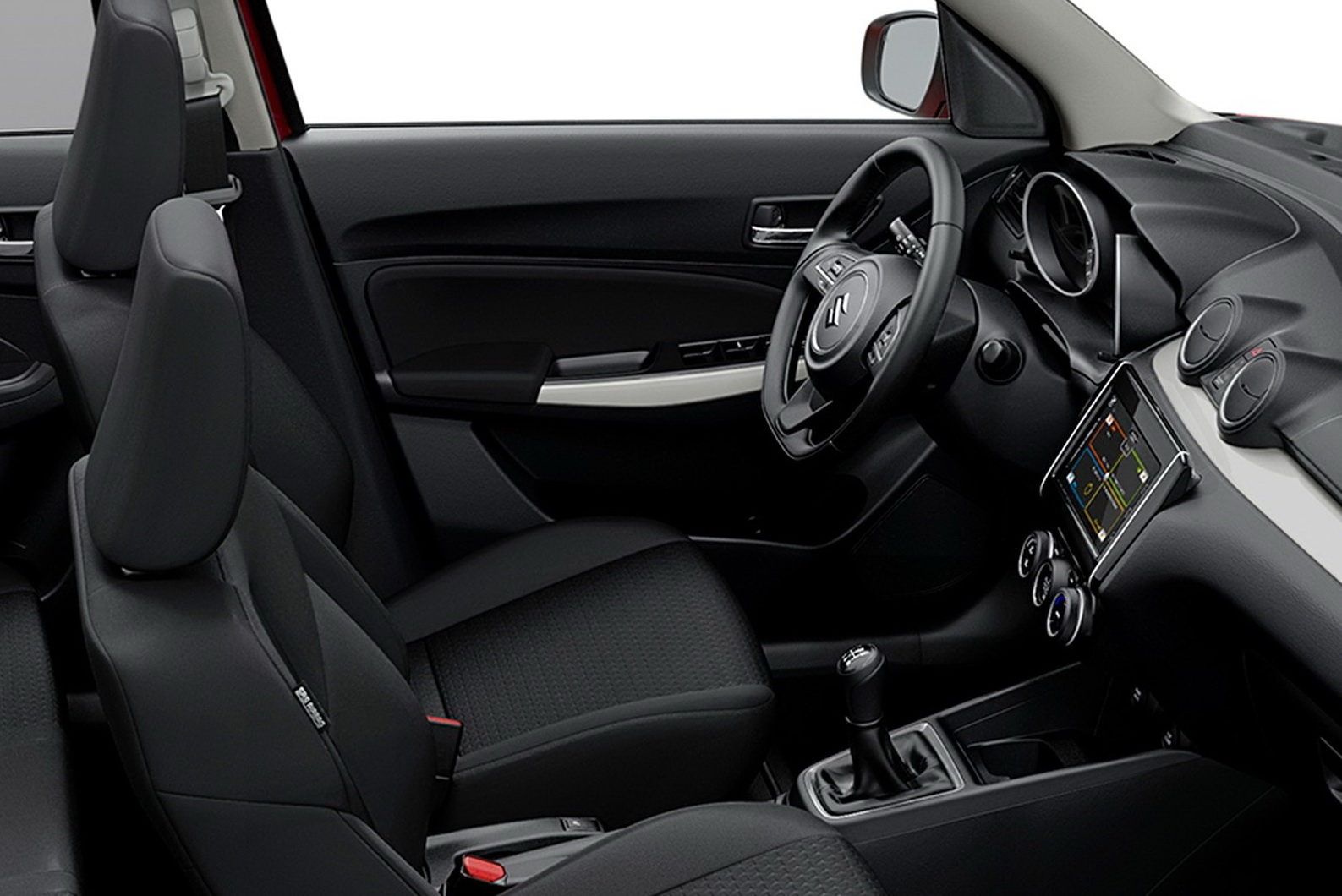
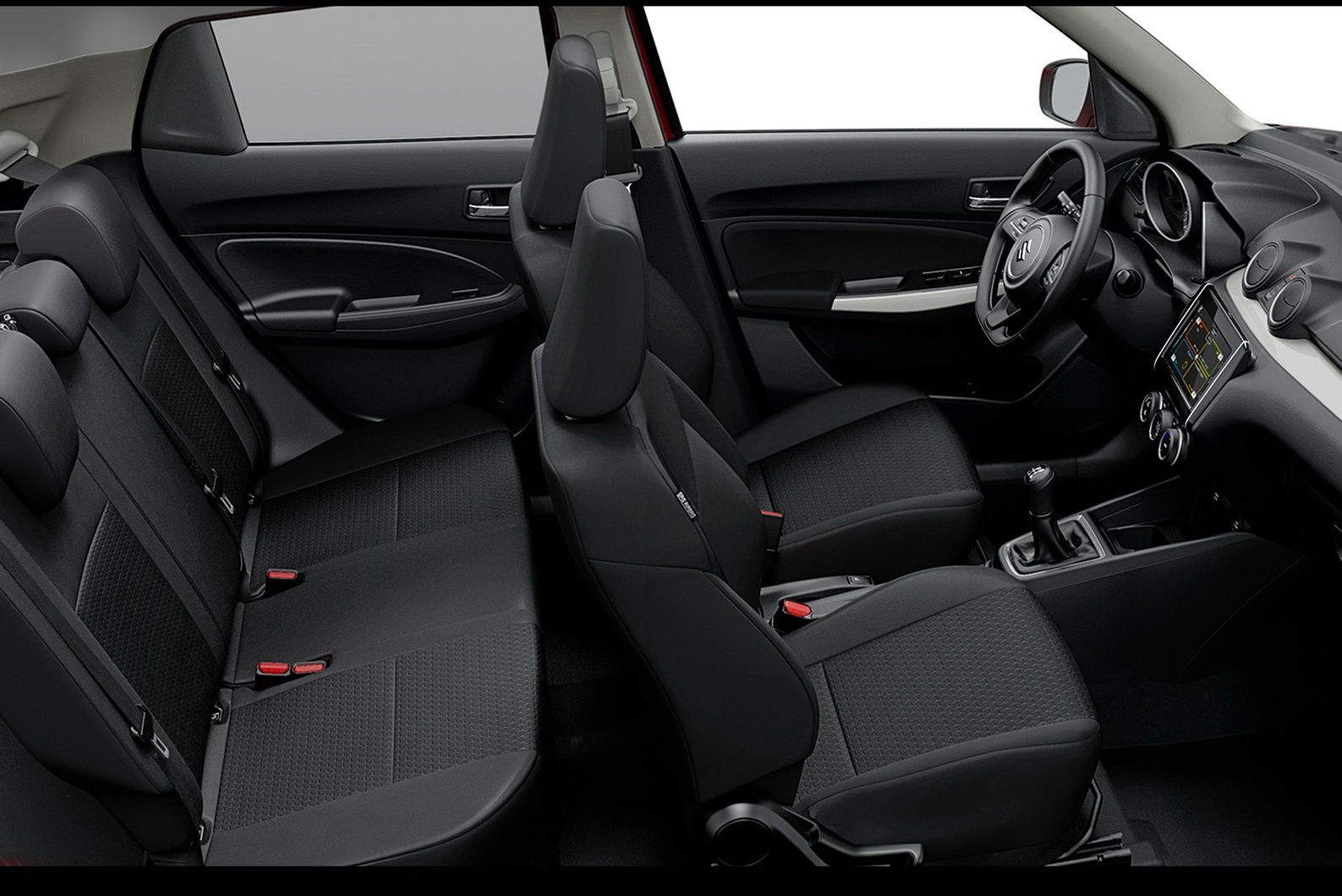


This new platform or underbody of new Swift is now 30kg lighter than before which has contributed to the car registering a kerb weight of just 890kg (SZ3 model) - 120kg lighter overall for the whole car. The new Swift is 10mm shorter than the outgoing model, while its wheelbase is 20mm longer, creating more interior room including 25 per cent more luggage capacity at 254L, or 54 litres more than the outgoing model. It is also 15mm lower and 40mm wider, further accentuating its low and wide stance. Additionally, the European Swift has a wider front and rear track than the Japanese Domestic model.

Development of New Swift - Put Through Its Paces in Europe In order to suit the needs of European customers, Suzuki knew that simply designing and developing the new Swift in Japan would not be sufficient. So it turned to the roads of Europe, where teams of local evaluation drivers helped to hone the new car. Testing of the chassis, which is the centrepiece of the new Swift's evolution, commenced in January 2016 in the United Kingdom and Germany. Covering a total of more than 6,000 miles, the teams tested as many as 90 different suspension prototypes in an effort to meet the need for optimum steering feel together with providing supple and agile suspension for British roads.

Boosterjet technology After the debut of the 1.0-litre three cylinder Boosterjet in Baleno in June 2016 and S-Cross in October 2016, this engine technology is now extended to the new Swift. Offering the same level of power and torque of a much larger capacity normally aspirated engine (1.7-1.8-litre), it delivers an effortless drive and genuine driving pleasure. This unit has an output of 111PS and is Direct Injection turbocharged (DITC). It is a very compact engine and offers 170Nm of torque available from 2,000rpm through to 3,500rpm for manual transmission. 1.2-litre Dualjet Suzuki first introduced its 1.2-litre (K12C) Dualjet technlogy in 2014, initially in the Swift and then in Baleno in June 2016. In summary, Dualjet incorporates Suzuki's renowned engine technology and uses twin fuel injectors for improved fuel economy. Utilising Dualjet design that positions the fuel injectors very close to the engine inlet valves allows for a finer fuel atomisation. The maximum power output is 90PS with a torque figure of 120Nm at 4,400rpm. Acceleration time to 62mph is 11.9 seconds for the SZ3 2WD and 12.6 seconds for the SHVS ALLGRIP equipped model.

The SHVS mild hybrid system is a compact and lightweight system that incorporates an Integrated Starter Generator (known as ISG) which acts as both a generator and starter motor, the ISG is belt driven and assists the engine during vehicle take off and acceleration and also generates electricity through regenerative braking. In new Swift, SHVS is available together with Boosterjet for the first time and results in CO2 emissions as low as 97gkm. The energy assistance provided during acceleration enables the SHVS to be known as a mild hybrid system which is ideally suited to a compact car and adds just 6.2 kg to the overall weight. 4WD (ALLGRIP AUTO)

The new Suzuki Swift adopts Suzuki's ALLGRIP 'AUTO' four-wheel drive system and is available as an option on the SZ5 model with 1.2-litre engine. First introduced in the previous generation Swift in 2014 this is a well proven and simple fully automatic and permanent four-wheel drive layout which transfers additional torque to the rear wheels when required via a viscous coupling.








